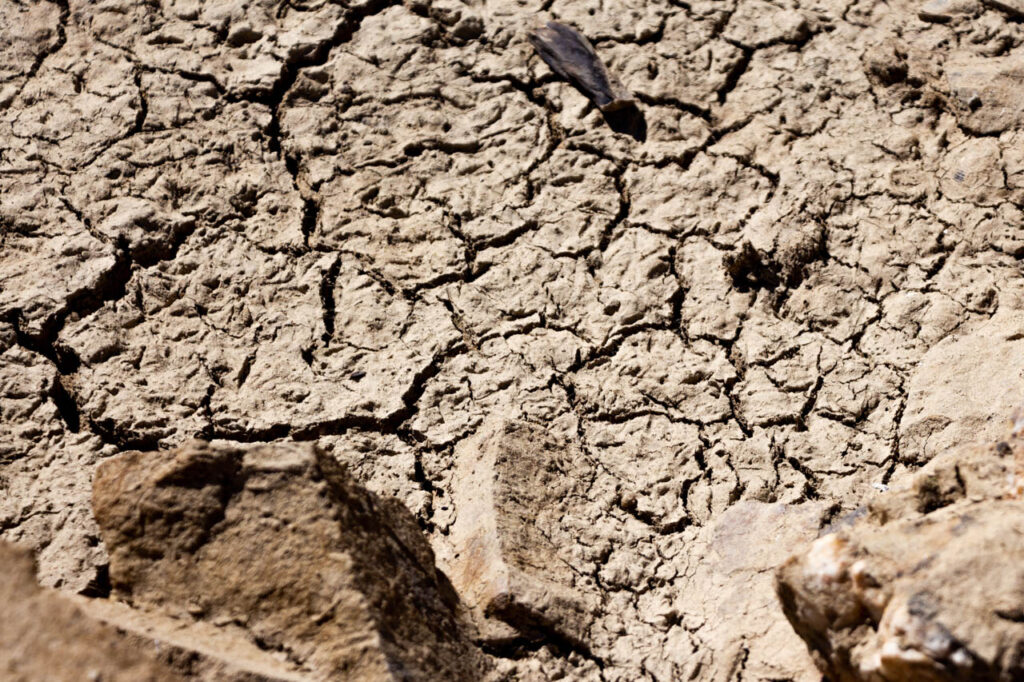The reactivation of public groundwater abstractions in Lagos, Aljezur and Vila do Bispo and investments to avoid water loss in the Alentejo dams of Morgavel and Monte Novo, are part of the new measures announced by the Government following another meeting of the Permanent Commission for the Prevention, Monitoring and Monitoring of the Effects of Drought, which took place yesterday, June 21st.
Following this 9th meeting with experts to assess the evolution of drought, which took place at a time when Portugal is “in a situation of severe and extreme drought, agrometeorological, throughout the continental territory”, the Ministry of Agriculture and Food and the Ministry of Environment and Climate Action took stock of the measures that will be taken, but also those already underway, to mitigate this scourge.
“Five million euros are being mobilized from the Environmental Fund to finance drought contingency measures. In addition to the awareness-raising campaign, starting in July, funds support interventions to prevent dam losses (for example, in Morgavel and Monte Novo) and the reactivation of public groundwater abstractions in the most affected areas (for example, in Lagos, Aljezur and Vila do Bispo)”, announced the Government.

“The execution project to ensure the technical solution to lower the level of abstraction in the Santa Clara reservoir” has also been concluded, in the Mira Hydrographic Basin, a “measure that will be implemented with the support of the PDR2020, in a total of six million euros'.
In addition, a notice will be issued, within the scope of the same Operational Program, until the end of June, for an intervention to increase by around 35% the water efficiency of the Mira irrigation perimeter, with an estimated value of fifteen million euros.
Meanwhile, «the conditioned use for irrigation in the dams of Bravura [Algarve] and Monte da Rocha [Alentejo]», which, like those of Santa Clara, Campilhas and Fonte Serne, also in Alentejo, and those of Arcossó and Vale Madeiro, in the North region, are the hydro-agricultural reservoirs at the national level «that have limitations».
In the case of the Bravura Dam, this means that farmers can no longer rely on water from this reservoir to water their crops, which, according to RTP, has already led to some producers who have not sowed the usual summer crops.
Even so, the two ministries ensure that “the Irrigation Campaign for 2022 is guaranteed” in 37 of the 44 public hydro-agricultural reservoirs monitored, as they have sufficient storage levels.
The "effort to expand the use of reused water for purposes that do not require drinking water is already underway, namely in the irrigation of permanent crops and in the support of ecosystems".
«At the moment, in the Algarve, a cubic hectometer of reused water is already used, and this value is expected to double by the end of the year. By 2025, it is estimated that a volume of eight cubic hectometers of water can be used for these purposes”, revealed the Government.
Investments that allow the reuse of treated wastewater are already foreseen in the 200 million package of the Recovery and Resilience Plan (PRR) to implement the water efficiency plan in the Algarve.
“Within the scope of this program, several measures are foreseen, of which the construction of a desalination plant, the interconnection of regional systems, the promotion of the use of reused water and the study of new sources of water stand out”, recall the two ministries.
It is also expected the approval, by the end of this month, of the Alentejo Regional Water Efficiency Plan.

The current scenario is far from encouraging, but even so, and “despite this year's drought situation being one of the most serious since records exist, the constant monitoring of dams and water availability makes it possible to guarantee supply for human consumption by the period of two years'.
The order of the Ministry of Agriculture and Food, which recognizes the existence of a situation of severe and extreme drought throughout the mainland, was signed yesterday, «with immediate effect, allowing the maintenance of measures aimed at mitigating the impact of drought on agricultural activity. and farmers' income'.
The Permanent Commission for the Prevention, Monitoring and Follow-up of the Effects of Drought will meet again in July for a new assessment of the evolution of the drought and possible measures to be taken.




















Comments